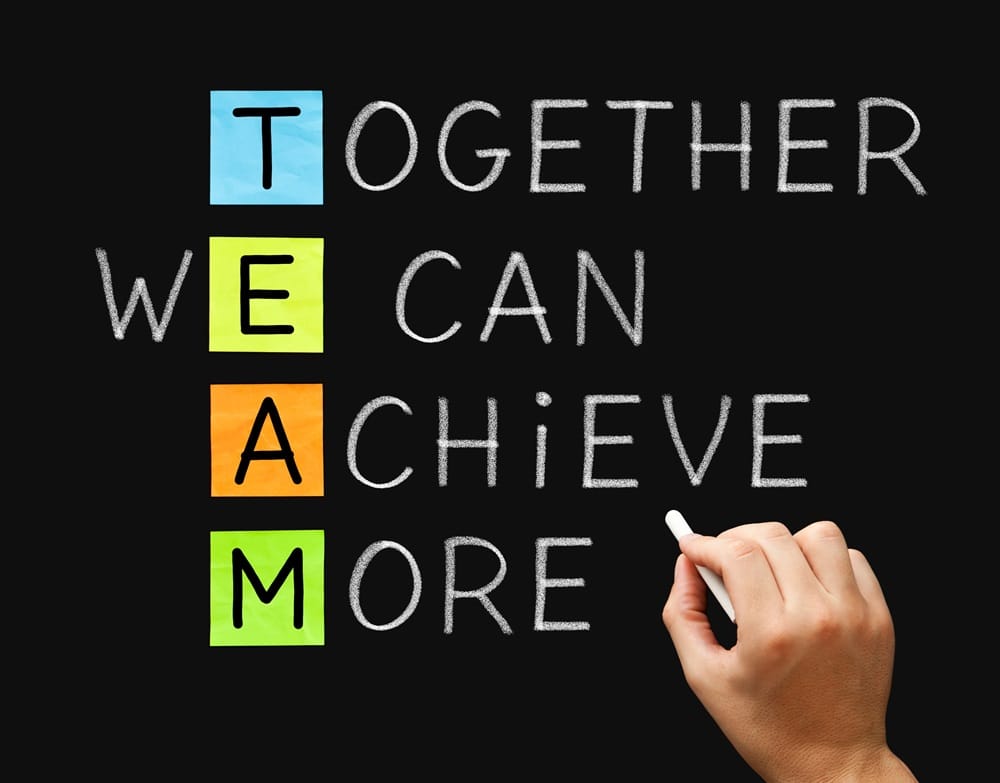Employees lacking proper leadership and team cohesion often falter while meeting team and organizational goals. On the other hand, employees who have a clear understanding of what is expected, the desired goals, and how they can contribute to the success of the team, organizations can develop better customer loyalty, outpace competitors, and improve their bottom lines.
Team Coaching
Coaching teams entails more than coordinating multiple employees. It focuses on assisting others within the organization to identify and use their strengths to enhance their performance and boost employee morale.
Teams that are coached work towards achieving common goals, demonstrate excellent communication skills and collaborate effectively to meet organizational requirements.
Here are 10 effective coaching strategies to drive success:
1. Build mutual trust
Building an organizational culture of trust fosters open communication. An effective team coaching training program encourages participants to be friendly, and non-judgmental, and make employees feel valued.
2. Celebrate success
Organizations can keep their people motivated and inspired by celebrating benchmark goals and milestones. Participants are encouraged to not only commemorate success but also make efforts to celebrate the individual success of the teams and their members.
3. Collaboration
Developing a collaborative culture rather than a competitive atmosphere is more effective. Leadership group coaching training focuses on celebrating team development and success rather than individual development. Collaboration encourages the thriving of team members and inspires people to rely on each other’s strengths.
4. Develop clear goals and objectives
Organizational leaders must encourage people to brainstorm and discuss innovative ways to achieve their long-term objectives. Additionally, participants are given certain strategies that enable them to develop timelines, which include benchmarks and milestones to bring in greater accountability and gauge team cohesion, accomplishments, and progress.
5. Foster transparency
Transparency improves trust, builds relationships, and ensures everyone is working towards the same goals. Building transparency at the top of the organizational leadership fosters a culture driven by open communication.
6. Know your people
Leaders are encouraged to make an effort to know their team members at deeper levels. Group coaching programs allow participants to understand more about their and others’ strengths and weaknesses, where they can excel, what challenges they face, and what motivates or demotivates them.
7. Manage conflicts
When people from diverse backgrounds, experience, and expertise make conflicts a huge possibility. Despite the best efforts from leaders and management to build a unified team, there is an inevitable possibility of conflicts between team members. Participants are given strategies to understand any problems and then implement processes to deal with these issues and avoid conflicts in the future.
8. Pave the way for success
Organizations cannot expect their teams to perform effectively without laying down the groundwork on what they need to do. Therefore, it is important for teams to be given adequate access to resources, software, and training programs along with any other tools they may need to achieve success and accomplish their tasks.
9. Procure feedback
Leaders are encouraged to procure feedback from their team members during meetings and one-on-one meetings. They must try to procure feedback to know how they can improve in their roles and help the team members meet their goals and improve their performance. It is important for leaders to keep an open mind during these discussions and be flexible while maintaining the right perspective.
10. Provide constructive feedback
Feedback can break or make teams. While procuring feedback from team members is important, giving constructive and positive feedback is sometimes tricky. Leaders must be cautious while crafting their messages, work towards refining their feedback skills over a period, and be open to receiving feedback from others.
The right team coaching can help decrease workplace conflicts, ensure everyone’s views are taken into consideration, build trust, and improve employee engagement. Remember, improvement is a continuous process and requires a commitment to get better over the years. Organizations must use all the available resources to manage their team members and continues building a trusted corporate culture as leaders and managers gain more experience and progress on their career paths.





